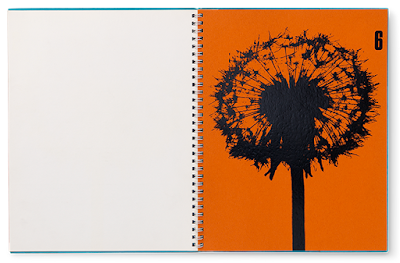Research
Colourplan Paper
Colourplan was inspired by the introduction of colour TV which led to creative industries exploring the possibilities of colour more. To reflect this change in culture G. F Smith developed a colour paper range that would be larger than any other, creating a range of papers that were broad in colour, weight, size and finishes. There had not been such a broad range of colours, weights, sizes and finishes before this. The range would go on to be used by designers and printers in a variety of work. It 'established a new standard of colour sophistication and subtle texture' allowing it to meet the needs of a range of projects.
Colourplan has a range of 50 coloured papers in 8 weights , that can be embossed with 25 textures.
All colours in Colour plan come in a range of weights from 135gsm to 700gsm.
They can also be embossed with a variety of different textures which include Brocade, Buckram,Colonade,Coltskin, Cord, Damask , Dapple, Fabric, Fine Linen, Granular, Gravure, Laid, Letaher , Linen, Matrix, Morocco, Pebble, Ridged, Ripple, Sandgrain, Silkweave, Smooth, Stipple, Sticco and Wire.
Colourplan Website
The Colourplan website uses the 'chips' seen in their physical Colour Selectors allowing all the colours to be viewed in a clear and simple way. The 'chips' are movable and arranged in a loose way creating a sense of movement and fluidity, showing the adaptability of the colours. The overlapping colours allow for the user to see how the colours work together an a movable colour pallette format.
Colours can be selected which shifts all other colours away from it. There are options for each colour to select complementary or adjacent colours which shows these colours in a new window, forming possible colour palettes.
The adjacent colour selector shows similar hues to the original colour.
Colours can be arranged alphabetically as well as from light to dark showing a progression through the colours.
Colour Plan and Printing
Colourplan is an uncoated stock suitable for a range of print processes. The papers work well with lithography, as the range was launched when this was a primary printing process. Lithography is based on the assumption that oil and water do not mix. An inked image is transeferred from a plate on to a rubber blank then onto a surface.
Colourplan works with most digital printing, however the paper can be optimised through a pre- treatment process called 'Sapphire Coating'. This is a custom service that G.F Smith do. Digital print uses inkjet, laser processes to print digital files. Digital printing has the benefit of having a reduced production time than other processes.
Colourplans weave means that foiling is held well creating a crisp edge and good contrast. Foil blocking is the process of applying a metallic or foil effect onto paper using heat release paper or pigment with the use of a heated die.
Colourplan can also be used for duplexing and triplexing to create combinations of texture and colour. Duplexing is often still a handmade process where two or three boards of the same weight are press laminated to bond the materials.
The Colourplan papers have flat colour and long fibres which means when die cutting is used, creasing marks are reduced when folded creating a precise finish. Die cutting uses a die or laser to cut shapes from the paper and is often used for packaging an 3D elements.
Colourplan's weights and strengths allow for good contrast between raised and compressed areas and can also combine foiling, tinting or blind - embossed which uses no other process.
The weave of the Colourplan papers works well under the pressure of metal type, which can also create some subtle debossing. Letterpress is the process of moving type within a bed of a press. These are inked then pressed onto the paper transferring the ink to the paper.
Thermography and Colourplan creates contrast between colour and texture. In thermography a design is printed using a slow drying rubber or oil based ink , then when wet, powder is applied. The resin is then heated so it solidifies to create a raised surface.
History of G.F Smith
The paper company was founded by George Frederick Smith in 1885. Their office was in London and the warehouse was in Hull. His passion for the material and its possibilities and his admiration for pulishers and printers led him to travel the world searching for the best paper manufacturers. The papers were sourced from mills in Britain, Europe and America.G. F Smiths promotional materials across its history have aimed to educate and inspire the uses of coloured and textured papers for designers.
In 1964 The introduction the benefits of television and colour as a form of advertising are seen.
The Elements Promotion were mailers that aimed to educate designers and printers about printing onto coloured stocks.
Photographic promotions were used as a way of promoting Accent Smooth and Naturalis to fulfil market demand.
A sapphire coating press allows the company to provide digital printing on paper and boards.
The New Selector allowed for papers to be chosen by colour, black and white, or range. Usually colour is considered as the first issue before weight, material and texture however the New selector allows for colour selection in a new way that combines all of these.


















No comments:
Post a Comment
Note: only a member of this blog may post a comment.